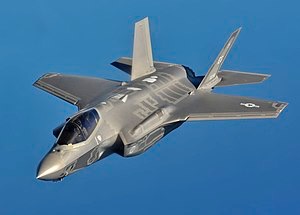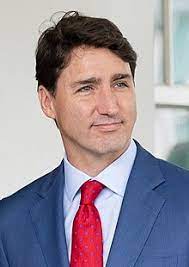Trudeau said the money saved by scrapping the F-35 procurement would go primarily to increasing spending on the Royal Canadian Navy.
Just watched an interview with Canada’s Minister of Procurement, Filomena Tasi re Canada’s purchase decision to buy F35s. She certainly didn’t give reasonable answers to questions about how we wound up with an aircraft that Justin Trudeau said we wouldn’t buy or why it took ten years for the Liberals to decide that the Conservatives were right in the first place.
She said about a hundred times (exaggeration) that it had something to do with the process, and that the process proved to Canadians that a good decision was made, suggesting that somehow Canadians most important expectation of our government is that they have a process that wastes our money on ten years of bureaucratic meetings. Great for bureaucrats, not so good for Canada’s tax payers.

But we have some specific questions for Ms. Tasi;
- How many F35s will Lockheed Martin build in Canada? – Zero – SAAB was going to build all of the planes in Canada.
- How much does it cost per hour of flight for an F35. – $22,000 – cost for SAAB Gripen $8,000. There is a good expectation that after we buy 80 F35s, we won’t be able to afford to fly them.
- Will Lockheed Martin provide 100% technology transfer to Canada or will much of the technology only reside in the U.S.? – SAAB would have provided 100% technology transfer.
- Will the current defects in the F35 be fixed for all Canadian aircraft?
The potential damage from sustained high speeds would influence not only the F-35’s airframe and the low-observable coating that keeps it stealthy, but also the myriad antennas located on the back of the plane that are currently vulnerable to damage, according to documents exclusively obtained by Defense News
five of 13 category 1 problems have been “closed,” meaning they were eliminated or sufficiently corrected. Five were downgraded to a lower level of deficiency after actions were taken to help mitigate negative effects, and three issues remain open and unsolved, according to the F-35 program executive office.
Four additional CAT 1 problems have also since been added to the list, raising the total CAT 1 deficiencies to seven. The program office declined to provide additional details about those issues for classification reasons, but stated that software updates should allow all of them to be closed by the end of 2020.
5. Are we up to date on current defects and are we satisfied that they will All be resolved on Canadian aircraft? Considering that defects are not made public, should Canadians be assured that the Liberal government will insure that we get defect free aircraft? Will we get F35s within schedule and at the budgeted price? The Liberals record with the Cyclone helicopters suggests that procurement schedules and delivery costs aren’t their strong point. Since the Cyclones entered service their dependability hasn’t been so great either, with 1 crash due to poor electronic equipment and currently cracked airframes.How much pressure did the U.S. government put on the Liberals to ensure that we bought their airplane? Seriously. only a fool would believe that there was none.
6. When the U.S produces their replacement for the F35, which they are currently working on, are they going to replace Canada’s F35 with the new aircraft at no additional cost?
Ms Tasi, you had ten years, you should have answers for these questions





